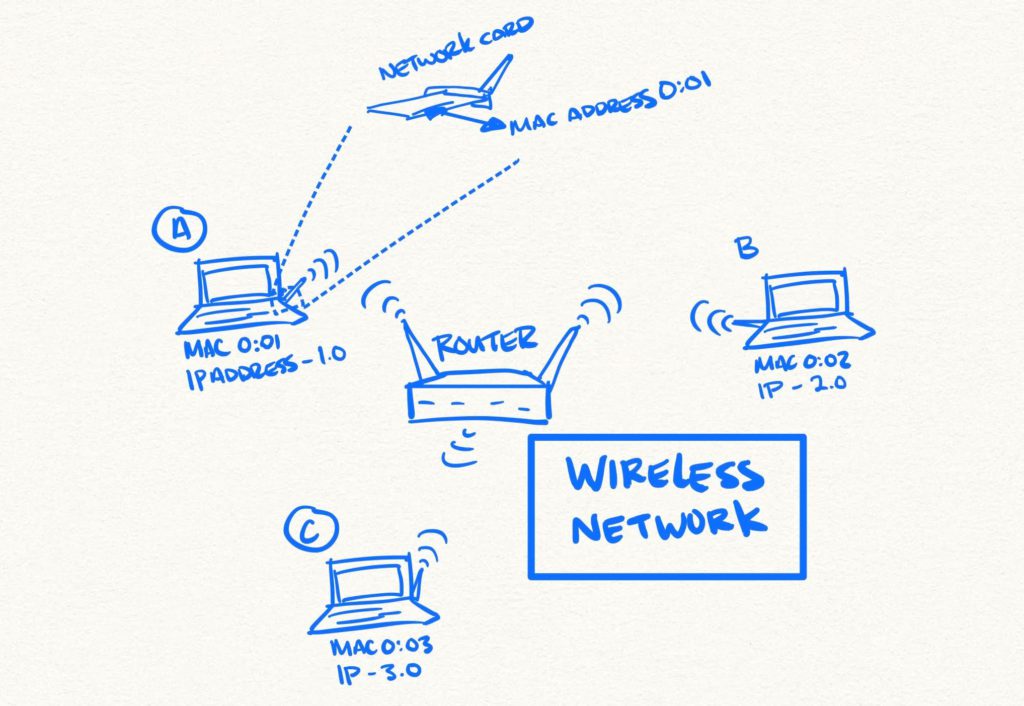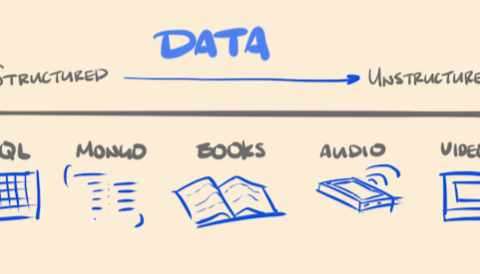People like information, but they like to share it too, it is a cool part of being human. Since computers are human-created information machines, it is not surprising that sharing info is one of their key functions. With one computer all the inputs and outputs stay inside itself. With two, you have to solve moving information from one machine to another. You can do that with wired and wireless networks, let’s dig in!
Wired
Wired networks are simple. Run a wire from computer A to computer B & congrats, you’ve got a network. To send that “m” we learned about before to another machine instead of your monitor, you convert the 1s and 0s into a signal & send it along the “road” of wires you set up to the next computer who converts it back to an “m” again. When you add a 3rd computer to your network, you introduce this weird problem that if A wants to talk to C it has to go through B. Dumb. So people invented a tool called a switch to solve it. This fella can be the center of the network and send stuff to the right computer without going through all the others. How does it recognize devices? Well, you call your friends names like Bob & Alice, a switch calls devices plugged into it by their number IDs called MAC addresses. They are all unique & never duplicated so unlike Bob or Alice, you can rest easy 00:0a:95:9d:68:16 there will never be another one named exactly as you, you special snowflake you. Specifically, their names are burned onto a part of the computer called a network card. It’s job is to send & receive the messages outside the computer. The whole thing looks like this:
Wireless
You’ll need a wireless network if you want to send a message farther than you want to run cable. And let’s be honest, cables are a real pain in the sitter. A router will be exactly the tool you’ll need to replace those pesky wires. These guys send out a wave into an area that reaches every part of your house except for the one you really need it to. That wave is an electromagnetic one, just like light is, and so travels at the same speed. It has a specific wave (picture the waves from a raisin thrown into a pond) and so even though the speed is the same, the waves can be different patterns. Think of it as wave peaks per second. You’re probably familiar with the terms: 2.4 Ghz and 5 Ghz. It means 2.4 or 5 billion peaks per second in its respective wave patterns. Your name-burned-into-it Network card can send and read the 1s and 0s stapled onto these waves. Besides being a wave-sender, your router also routes. Think of it like this, if the router were a person it’d be more informal than calling people by their proper name (MAC Addresses in this case) and instead use nicknames like “bobby-boy” or “Allie-alice” as long as there is only one “bobby-boy” on the network it is managing – it doesn’t care. Oh & that nickname is called an IP Address, the router makes sure that all wave-carried info packets come and go to the right IP Address. An example one looks like this: 172.16.254.1. Below is the whole wireless diagram:
Ahh, nice. Now you’ve figured out how to create a network & get rid of wires by broadcasting all your info into the universe for anyone within reach to read. Wait…anyone can read my stuff?
Let’s talk security next.





